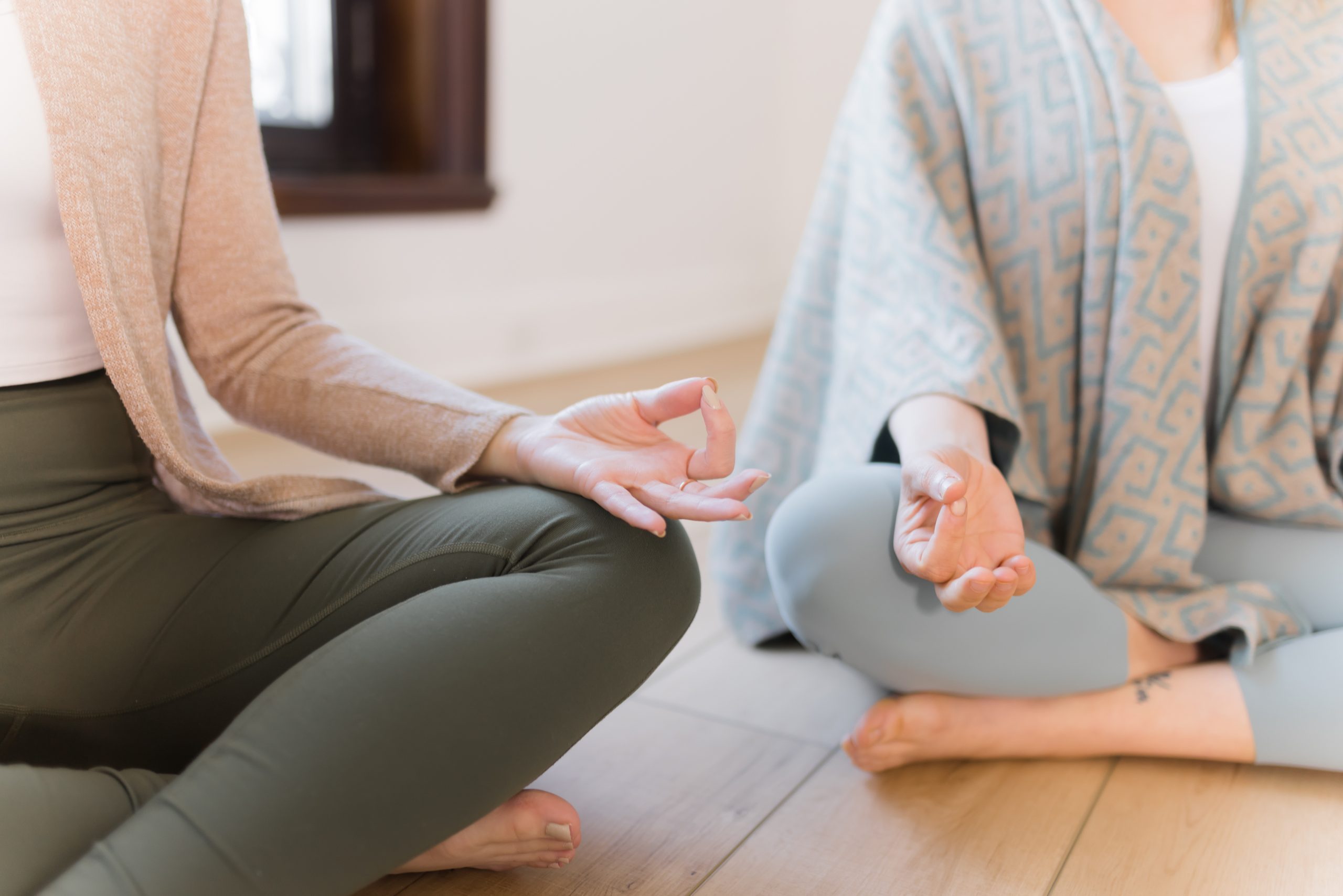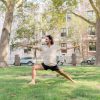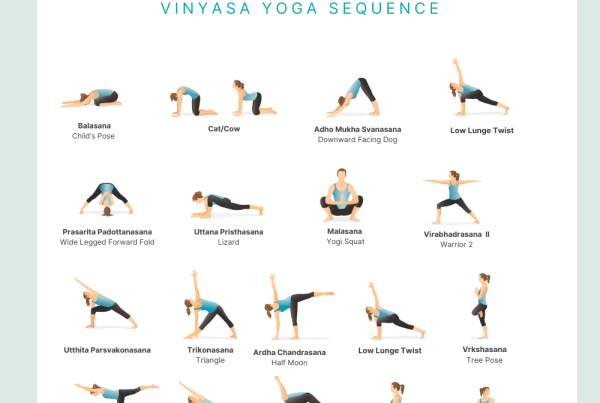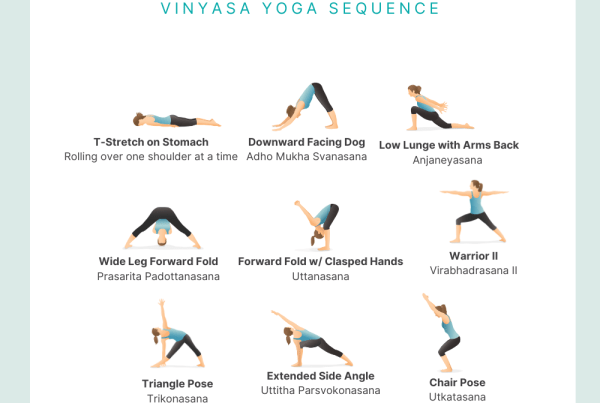
As we often hear, yoga is a practice; yet it is also a journey. I like to describe yoga as a journey of self-discovery, healing, and transformation. A yoga practice guides you to embark on this journey to nourish your mind and body, and cultivate inner peace and well-being.
We navigate this journey by incorporating different techniques, one being mudrās. Mudrās are practiced in many different ways. However, usually when you think about mudrās, you think of a hand gesture or hand position. Technically speaking these are hasta mudrās, hasta meaning, “hand” in Sanskrit.
Hasta mudrās are hand gestures and positions commonly used in yoga, meditation, dance, and Ayurveda. Through yogic philosophies, these gestures are understood to have powerful effects on the mind and body, and have been practiced for thousands of years in India and other parts of the world.
In this blog post, we will explore what mudrās are, how they work, and some popular mudrās to try.
Types of Mudrās
Did you know there is more to mudrās than just gestures with your hands? There are a few categories of mudrās, for example:
- Hasta mudrās, which are done with your hands and can be practiced with āsana or meditation. There are various positions for the thumb, fingers and hands to help balance the elements in the body.
- Māna mudrās, which are done with the head, tongue, eyes, nose, ears, lips, hands, etc. Māna mudrās incorporate the senses. (jnana indriyas)
- Kaya mudrās focus on postures made with the whole body, similar to āsanas. Kaya mudrās focus on the flow of prāṇa and the chakras while cultivating a meditative focus and are held for multiple minutes at a time.
- Bandha mudrās which focus on the energy locks in the body. The energy locks are the pelvic floor, abdomen, and throat. You may have learned about bandhas before. Did you know they are also considered a mudrā?
- Adhara mudrās involve the pelvic floor and focuses on meditation with the chakras.
Now that you know there are multiple categories of mudrās, what does the word mudrā mean? If all these different categories are considered mudrās, what do they all have in common?
A quick way to define mudrās:
The word mudrā comes from the Sanskrit language meaning “seal” or “gesture.” Mudrās are a form of non-verbal communication that involves the use of the hands, fingers, and sometimes the whole body. Mudrās are meant to create a circuit of energy in the body and stimulate different parts of the brain.
A more comprehensive definition:
Let’s break down the Sanskrit word mudrā. MUD (delight or pleasure) and DRĀ (to draw forth). This means that mudrās bring forth/draw forth happiness, delight, bliss, pleasure, etc. Practicing mudrās has a special purpose.
Mudrās are often used in yoga and meditation to enhance focus, relaxation, balance the body and mind, and enhance spiritual connection. They can also be used for physical and emotional healing, as well as for specific therapeutic purposes.
How Do Mudrās Work?
Mudrās are meant to work by stimulating specific parts of the body and brain through the use of pressure points and energy channels. In yogic philosophy, the human body has a complex network of energy channels, known as nāḍīs, which carry life force energy, or prāṇa.
In other words, mudrās move prāṇa. Prāṇa is our vital energy that gives us life. It is the force that allows us to breathe, move, think, and feel. In our yoga practice we use various techniques to balance and change the flow of prāṇa in our body. By doing so, we can improve our health, increase our vitality, and connect with ourselves and the world around us more authentically.
Some examples of these techniques are:
- Āsanas (postures that are seated, standing, reclined, etc.)
- Pranayama (breathing exercises that may be slow or quick, etc.)
- Mudrās (hasta mudrās, kaya mudrās, bandha mudrās, etc.)
Mudrās and the Elements:
Mudrās also interact with the five elements of the body and the natural universe: fire, air, space/ether, earth, and water. Each finger is associated with a specific element, and different mudrās are practiced to activate, relax, and/or balance these elements in the body.
- Thumb: Fire (Agni)
- First Finger: Air (Vayu)
- Second Finger: Space/Ether (Akasha)
- Third Finger: Earth (Prithvi)
- Fourth Finger: Water (Jala/Varuna)
If you want to learn about the mudras, check out this exciting new course offered at YogaRenew, Mudrās & Mindfulness! It’s completely online and self-paced. Discover the power of mudrās and their ability to enhance your physical, emotional, and spiritual wellbeing.
This course specifically focuses on hasta mudrās. You will learn the history and science of mudrās, along with explanations of twenty hasta mudrās to practice and/or incorporate in your yoga and meditation classes. The Mudrās & Mindfulness course offers informative and engaging lessons; perfect for any yoga teachers or students looking to learn more about mudrās and the practice of yoga.
Three Popular Mudrās to try today:
There are hundreds of mudrās, each with its own specific benefits and uses. To try these mudrās below, first find a comfortable place to sit. Practice these mudrās for two minutes each. Calmly breathing, your eyes can softly close, and notice the difference in your mind, body, and heart!
1. Chin Mudrā (Mudrā of Consciousness)
Chin mudrā is one of the most commonly used mudrās in yoga and meditation. It is performed by touching the tip of the thumb to the tip of the index finger, while keeping the other fingers extended, with the palms facing up. Chin mudrā is uplifting and guides you to become more receptive to your breath and awareness. This mudrā benefits concentration, inner focus, and guides you to tune into your intuition.
2. Gyan Mudrā (Mudrā of Knowledge, sometimes spelled Jnana Mudrā)
Gyan mudrā is practically identical to chin mudrā, except the palms are facing down. With the palms facing down, this gesture guides you to ground and relaxes your body. This mudra enhances concentration, memory, and creativity. This mudra helps you to honor the wisdom within your body.
3. Padma Mudrā (Lotus Mudrā)
Lotus mudrā begins with the hands together in prayer at heart center. The thumbs, pinky fingers, and lower palms stay touching while the first, second, third finger, and upper palms open and widen like a blooming lotus flower. This mudrā helps to open your heart space and to welcome kindness and compassion towards yourself and others.
When Can I Start Practicing Mudrās?
You can incorporate mudrās into your yoga and/or meditation practice daily or as often as you’d like. You can practice an hasta mudrā anywhere from one minute, five minutes, ten minutes or thirty minutes. Sometimes it is best to practice the mudrā in smaller increments of time. For example, if you want to practice a mudrā for twenty minutes total, be in the mudrā for five minutes four times a day. There is no right or wrong way to practice them and you can always do what is best for you.
I’ve created an entire guide to the mudras, dedicated to providing a more in-depth insight into how to start working with mudras. You can find it here: Your Guide to Understanding the Mudras.
You can also incorporate hasta mudrās in other activities, as well. Maybe while you are walking you can hold a mudrā in the pocket of your sweatshirt or when you are sitting on the bus or the train. You can also practice a mudrā while laying down before going to sleep. Overall, you can practice mudrās anytime and anywhere!










